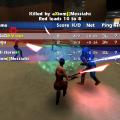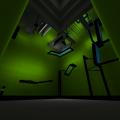-
Posts
971 -
Joined
-
Last visited
Content Type
News Articles
Tutorials
Forums
Downloads
Everything posted by afi
-

The Jedi Knight saga has been wasted.
afi replied to Mizore's topic in Jedi Knight General Discussions
I cry when I see how the new Battlefront games handle lightsaber combat. I fucking cry. All aspects of these games (except for visuals and audio) are literally worse than in JK2, a 15 year old game. But that's a general problem with current AAA games, not only EA, making gold plated pieces of shit that look awesome but play profane af. A new Jedi Knight (which would be a reboot with a name as simple as "Jedi Knight") would be bad anyway. AAA developers and publishers don't take a risk. They would be like "Ok, Jedi Knight was this game where people played with lightsabers etc, so let's just implement a system where you have to press a single button and the game will handle everything else. That's what people want and everything else would be too complicated for the players anyway." So yes, the Jedi Knight series has been wasted. But now it's too late. We will not see another game with JK's lightsaber-combat and movement mechanics cause it's simply too complicated for what current AAA developers are aiming for. That's the only conclusion you can draw from reboots like Thief, Tomb Raider and Battlefront etc. I'd rather have no new Jedi Knight than another bad reboot (I was so angry about Thief...). The only option that I see are dedicated fanprojects. /rant -
There are way too many sound guys. Nice project
-

Who is more Annoying? (Penin vs. Binks)
afi replied to Gorc's topic in Jedi Knight General Discussions
At least you can kill Rosh -
Ah yea, you mentioned that before. Is that available somewhere?
-
Can you explain please? The final goal of this project would be replacing all old assets with new assets tho.
-
This here is pretty cool to convert maps btw: https://forums.unrealengine.com/community/community-content-tools-and-tutorials/123612-tool-quake-3-assets-maps-converter
-

"jedi Academy Helped Me Come Out Of The Closet"
afi replied to Jango40's topic in Jedi Knight General Discussions
^ -

Porting Maps From Here To Source Engine.
afi replied to 11Cent's topic in Jedi Knight General Discussions
While it's easy to port to goldsource, source engine is using a different map format. You can maybe try to open your map in Hammer, then export it to goldsrc and from that to source. Not sure if theres a tool that makes it easier. -
What makes this different to HammUEr?
-
Yes
-
I'm pretty sure Eridan Crisis will go for a saber combat system like in MBII
-

Has anyone considered making a modern Jedi Knight Game?
afi replied to DarkOrchids's topic in Jedi Knight General Discussions
https://jkhub.org/topic/9348-open-source-jedi-knight-in-a-modern-engine/ but this is only about multiplayer, no singleplayer -
Did you read my message?
-
New discord invite link (the other one expired): https://discord.gg/BCMhU3h We are still searching for people who wanna contribute
-
- 5 comments
-
Defender and I don't really remember the staff hilts.
-
I opened a discord channel: https://discord.gg/9MmT4q I suggest everyone who wants to contribute or is interested in this project joins it. Will make it easier to communicate and to see who is actually interested.
-
I would see it like the difference between JK2 and JKA or Age of Chivalry and Chivalry: Medieval Warfare. Different, but still similar enough so people who played the older games will feel comfortable. Splitting the community is a huge argument. I think that should be avoided at any cost.
-
I actually had a similar idea, having two rulesets: Original JK and one with new mechanics. But I agree with Boothand, this would confuse people. I think what is needed is a clear direction in terms of gameplay and no fear if things become a little different. Even tho I adore the gameplay and movement in JK, I don't think that this should be just a port of the same mechanics to a newer engine.
-
-
Dunno, they didn't really implement a lot of gameplay, I doubt they could provide a lot of help... maybe with the animations tho





